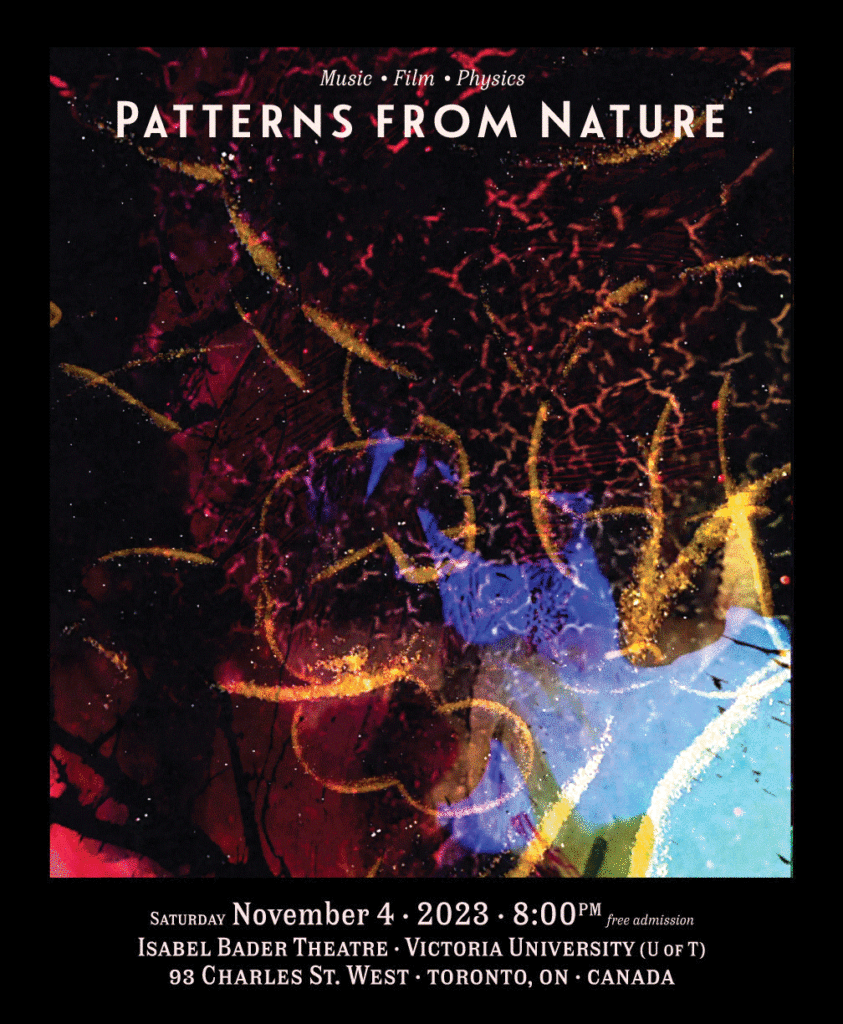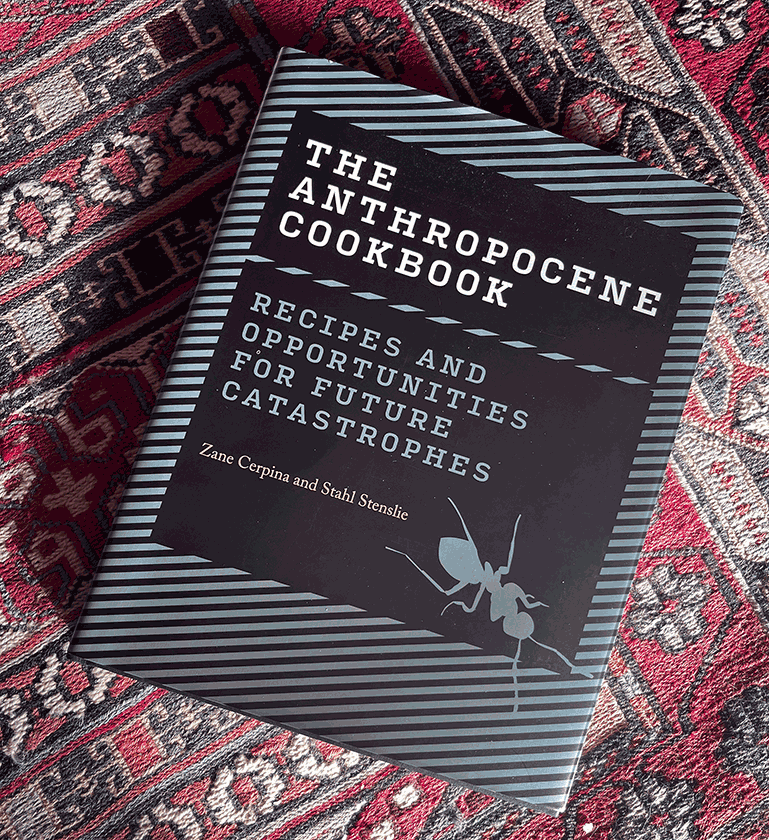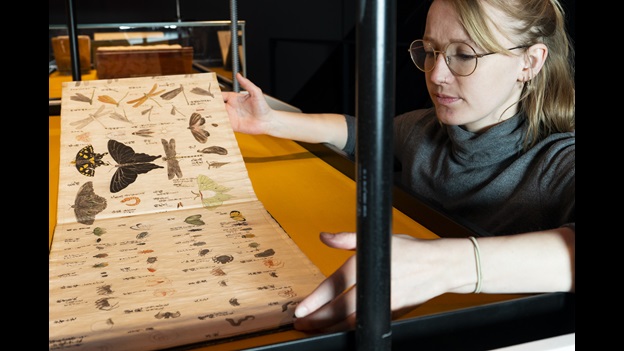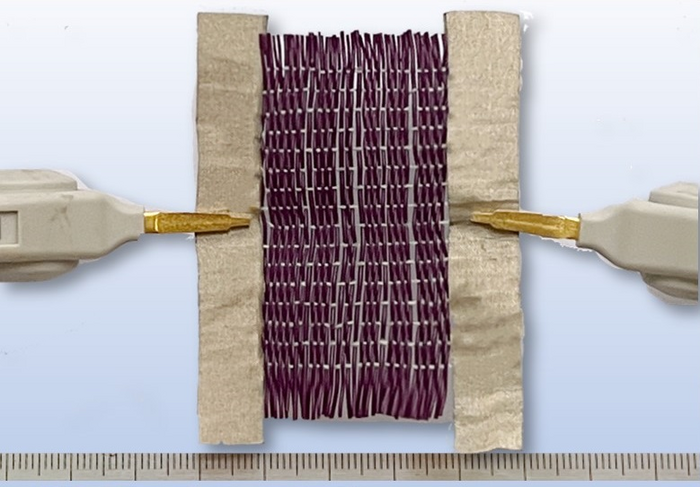SxSW 2024 (Austin, Texas, US)
Here’s a preview of what you’ll be seeing if you are in Austin, Texas at SxSW 2024 for Moritz Simon Geist’s March 15, 2024 performance,
I have more details from a March 11, 2024 SxSW announcement (received via email),
Innovative Sound Sculptor and Roboticist Moritz Simon Geist Plays the MUTEK/Houndstoooth Showcase at Central Presbyterian Church March 15th [2024]
Event Details Date: March 15th [2024], 8:00 pm
Lineup
7:30 pm – Doors
8:00-8:40 pm – Moritz Simon Geist
9:00-9:40 pm – JFDR
10:00-10:40 pm – Hinako
11:00-11:50 pm – Aisha…
“Geist’s handmade robots made movements as simple as a ping-pong table flapping or coiling up to shoot, but the contact microphones and sound processing documented a percussive, electro, mini symphony.” – Austin Chronicle
There’s mystery in Geist’s music. It’s heady, ASMR-infused dance music — there’s something special happening here, but it’s not immediately clear what.” –– Engadget
“For Geist, the instruments represent not just a new way to make music, but a new way to experience it. The instruments each have a visual component, which makes it possible to watch the sounds as Geist creates them.” – Wired
The performance is fascinating and bewildering, but the music itself provokes one to want to dance in a dimly lit nightclub.” – MixMag
“It doesn’t get geekier than this” – New York Times.
“These robots play electrifying techno music.”– CNET
German sonic artist Moritz Simon Geist will showcase his latest work “Don’t Look At Me” at the Central Presbyterian Church March 15th. With his new robotic instrument Geist is presenting a contemplative ambient performance around the themes attention economy, spatial sound and sine waves. “Don’t Look at Me” was developed as an interactive installation in 2023 in South Korea and uses resonator tubes, light, and vibrato elements to create a fascinating ever-changing soundscape. For the SXSW event, Geist is showcasing his latest compositions with this instrument.
Moritz is returning to SXSW 2024 with a handful of performances and robotic interventions. His works and performances revolve around the questions: How do machines, algorithms and humans interact? How can we find a playful way to interact with non-human music players? And can robots play techno?
Moritz and his team have been developing sound machines and kinetic installations for more than 10 years already, and his works and performances have been shown at festivals and stages around the world. For this SXSW, Moritz is bringing both performances for several techno shows as well as a contemplative ambient show at the Central Presbyterian Church on March 15th [2024]. Here he will present compositions for his latest work “Don’t Look At Me”.
Geist is well known for his performances and self-developed instruments using robots and mechanics as the main sound source. His works have been shown internationally and have been awarded numerous awards in the last years.
Of his return to SXSW, Moritz says, “SXSW 2024 is only the second time I’m playing ‘Don’t Look at Me’ with my new robotic instrument! Playing with a new instrument this complex is always like this first walk outside with a toddler: You never know where you end up: manic laughter at the playground or existential crying in the supermarket.” Regarding his ongoing fascination with machines as instruments, Moritz muses, “When I was younger, I played in a punk rock band, but at some point, I got really annoyed by my fellow musicians, so I swore to myself that I would never play with human musicians again. Jokes aside, I think robotics is a wonderful tool to give a body back to the normally electronically generated sound of techno. The main reason why I’m using robotics as a musical instrument is that the computer is, in my opinion, not the best tool for creating electronic sounds.”
More about Moritz Simon Geist and “Don’t Look at Me” https://www.moritzsimongeist.com/dont-look-at-mehttps://cloud.moritzsimongeist.com/s/yp9ZYsieH8wwDPD
TED 2024 (Vancouver, BC, Canada)
Should you be considering a ticket purchase for the April 15 – 19, 2024 TED event in Vancouver, the cheap ($6250 [USD?]) seats are sold out. Tickets at the next level up are $12,500 and after that, they are $25,000. Should you have more money to burn, you are of course free to become a patron.
A look at the 2024 list of speakers will tell you it is an eclectic list with a significant proportion of speakers focused on the topic of artificial intelligence/robotics.
The three speakers being highlighted here are not focused on artificial intelligence/robotics and have nothing in common with each other (topic wise).
First up, Bill Ackman, a very, very wealthy man, has a messy backstory. Here’s the short description followed by the long one,
Bill Ackman
Founder and CEO, Pershing Square Capital Management
TALK TOPIC
The activist investor playbook (in conversation with Alison Taylor)
Bill Ackman is founder and CEO of the hedge fund Pershing Square Capital Management and a storied activist investor. He is the chairman of Howard Hughes Holdings, a real estate development and management company based in Texas, and a member of the board of Universal Music Group. He is also the co-trustee of The Pershing Square Foundation, a family foundation supporting those tackling important social issues worldwide. At TED2024, Ackman will be interviewed by business professor Alison Taylor.
Mr. Ackman is not entirely self-made, from his Wikipedia entry, Note: Links have been removed,
…
Ackman was raised in Chappaqua, New York, the son of Ronnie I. (née Posner) and Lawrence David Ackman, the former chairman of a New York real estate financing firm, Ackman-Ziff Real Estate Group. [emphases mine] [10][11][12] He is of Ashkenazi Jewish descent.[13][14][15] In 1988, he received a Bachelor of Arts degree magna cum laude in social studies from Harvard College. His thesis was titled Scaling the Ivy Wall: The Jewish and Asian American Experience in Harvard Admissions.[16] In 1992, he received a Master of Business Administration degree from Harvard Business School.[17]
As for the messiness, there’s this from from his Wikipedia entry, Note 1: Links have been removed, Note 2: All emphases are mine,
…
In October 2023, following the onset of the 2023 Israel–Hamas war after the October 7 attack, several Harvard undergraduate student groups signed a letter condemning the Israeli state. The statement held the “Israeli regime entirely responsible for all unfolding violence,” declared that millions of Palestinians in Gaza have been “forced to live in an open-air prison,” and called on Harvard to “take action to stop the ongoing annihilation of Palestinians.”
In response, Ackman called for the publication of the names of all students involved in signing the letter so that he could ensure his company and others do not “inadvertently hire” any of the signatories. Ackman posted, “One should not be able to hide behind a corporate shield when issuing statements supporting the actions of terrorists,” and the names “should be made public so their views are publicly known”.[83] Ackman’s stance was supported by other CEOs such as Jonathan Neman, David Duel and Jake Wurzak.[84] Former Harvard president Lawrence Summers, though agreeing with Ackman on the need to look at employees’ political views, called Ackman’s request for a list of names “the stuff of Joe McCarthy”.[85]
In November 2023, Ackman defended Elon Musk after the latter expressed agreement with a user who asserted that “Jewish communities” supported “hordes of minorities flooding their country” and pushed “dialectical hatred against whites”, describing it as “shoot from the hip commentary”.[86][87]
Ackman also engaged in a campaign to remove Claudine Gay from her position as Harvard’s president. He argued that her response to antisemitism was insufficient and amplified allegations by conservative media that she engaged in plagiarism.[88][89]
On January 3, 2024, Business Insider published an article alleging that Ackman’s wife, Neri Oxman*, plagiarized portions of her dissertation. A day after the article’s publication, Oxman apologized for plagiarizing portions of her dissertation.[90][91] Ackman, in response to the article, pledged to conduct a plagiarism review of all MIT [Massachusetts Institute of Technology] faculty, including MIT’s president, Sally Kornbluth, who, alongside Gay, attended a congressional hearing on antisemitism in higher education.[90]
…
In 2018, Ackman became engaged to Neri Oxman.[94] In January 2019, Oxman and Ackman married at the Central Synagogue in Manhattan,[13] and they had their first child together in spring 2019.[95] In August 2019, Ackman wrote to MIT Media Lab director Joi Ito to discourage him from mentioning Oxman when discussing convicted sex offender Jeffrey Epstein, who had donated $125,000 to Oxman’s lab.[96]
…
*There are more complications where Neri Oxman is concerned. She is an Israeli-American who came to the US in 2005 where she commenced PhD studies at MIT. After graduation she became a professor at MIT, a position she has left to found Oxman Architects in 2020. Despite the company name, the business seems more focused on art installations and experimental work. (sourced from Oxman’s Wikipedia entry)*
I wonder how Mr. Ackman characterizes the difference between activism and actions, which result in the destruction of other people’s careers because you disagree with them.
Ackman’s interviewer, Alison Taylor is an interesting choice given that she is a business professor at New York University’s Stern School of Business and author of a February 6, 2024 article (Corporate Advocacy in a Time of Social Outrage; Businesses can’t weigh in on every issue that employees care about. But they can create a culture of open dialogue and ethical transparency [emphasis mine]) for the Harvard Business Review, The article is excerpted from Taylor’s book, “Higher Ground: How Business Can Do the Right Thing in a Turbulent World,” published by Harvard Business Review Press, Feb. 13 2024.
This talk looks like an attempt to rehabilitate Mr. Ackman’s reputation while giving Ms. Taylor publicity for her newly published book in an environment where neither is likely to be strongly challenged.
The two speakers I’m most excited about are Tammy Ma, fusion physicist, and Brian Stokes Mitchell, actor and singer.
As there is a local company known as General Fusion, the topic of fusion energy has been covered here a number of times including a relevant to Ms. Ma’s TED appearance December 13, 2022 posting, “US announces fusion energy breakthrough.”
From the 2024 list of TED speakers,
Tammy Ma
Fusion physicist
TALK TOPIC
The future of fusion
Tammy Ma is the lead for the Inertial Fusion Energy Initiative at Lawrence Livermore National Laboratory, where she creates miniature stars in order to develop ways to harness their power as a clean, limitless energy source for the future. She was a member of the team at the National Ignition Facility that achieved fusion ignition in December 2022 — a reaction that, for the first time in history, released more energy than it consumed. [emphasis mine] A fellow of the American Physical Society, she serves on the Fusion Energy Sciences Advisory Committee, advising the US Department of Energy’s Office of Science on issues related to fusion energy and plasma research.
Now for someone completely different, Brian Stokes Mitchell, from the 2024 list of TED speakers,
Brian Stokes Mitchell
Actor, singer
TALK TOPIC
A celebration of spectacle (with Lear DeBessonet [award-winning Broadway director who specializes in creating large-scale performances])
Brian Stokes Mitchell is a Tony-winning actor, singer and music producer. A veteran of 11 Broadway shows and a member of the Theatre Hall of Fame, he has performed iconic roles including Frasier’s snarky upstairs neighbor Cam, Hillary’s bungie-jumping boyfriend on the Fresh Prince of Bel-Air, The Prince of Egypt (singing “Through Heaven’s Eyes”) and, most recently, Stanley Townsend in the 2024 feature film Shirley with Regina King. He has performed twice at the White House, serves on the board of Americans for the Arts and is one of the founding members of Black Theatre United.
Stokes Mitchell performed at the Library of Congress Gershwin Prize for Popular Song ceremony in 2017 when Tony Bennett was the honoree. The performances were top notch but something happened when Stokes Mitchell took the stage for his first number. The audience was electrified as was every performer who came after him, some of them giving their second performance of the evening. There is no guarantee that Mr. Stoke Mitchell can do that at his 2024 TED talk but that is the blessing and the curse of live performances.
Enjoy!




